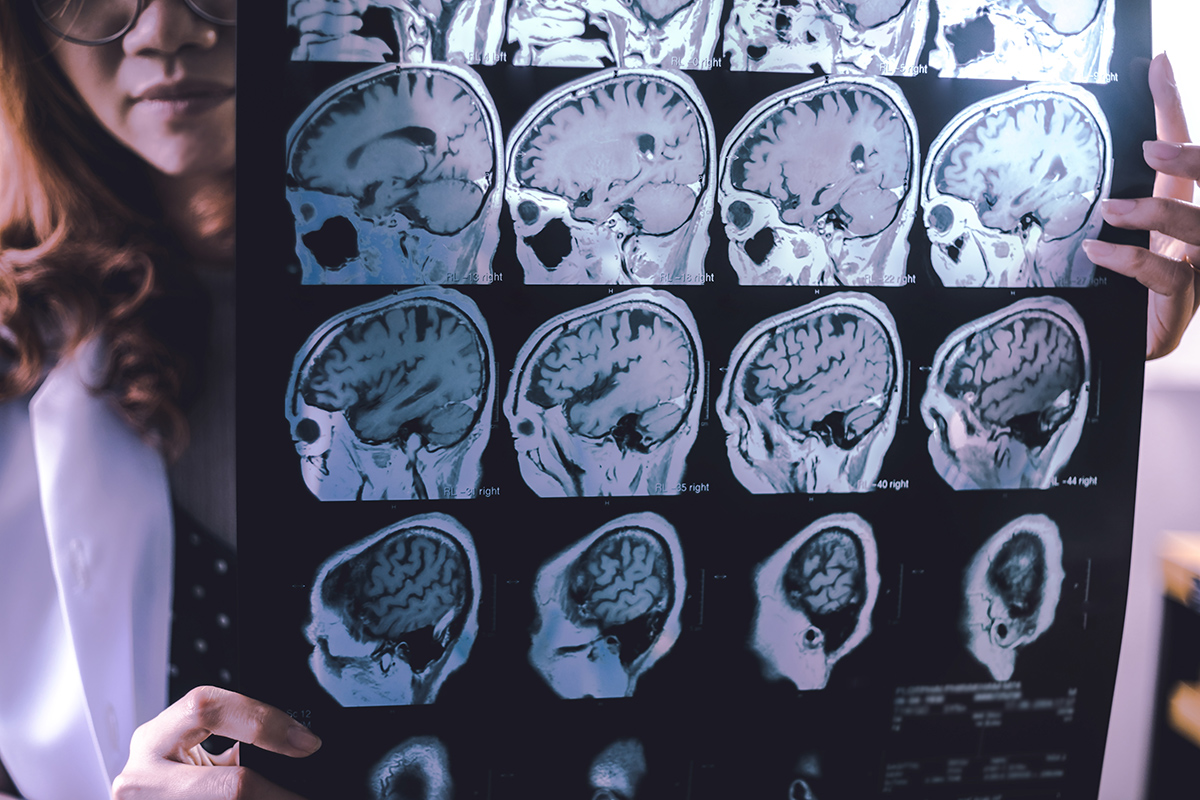Stages of Alzheimer’s Disease

The journey with Alzheimer’s disease is different for each individual. Some live only a short time after diagnosis. Some live for twenty or more years. Some progress quickly through the disease, others slowly. Symptoms — which ones, when they arrive and to what degree — vary too.
While each Alzheimer’s journey is unique, specialists have identified five general stages of Alzheimer’s disease. Knowing these stages can help in early intervention and identifying the best treatment and course of care for you or a loved one.
The five stages of Alzheimer’s disease
1. Preclinical Alzheimer’s disease
This stage begins before symptoms of Alzheimer’s appear, such as memory loss or changes in personality and behavior. With advanced research, we now know that Alzheimer’s can appear in the brain long before the disease is noticeable to you or others.
Genetic testing, biomarkers, neuroimaging and blood tests can all indicate whether or not someone has Alzheimer’s disease in this stage.
Genetic Testing
Three genes with rare variations have been identified that cause Alzheimer’s, including APOE-e4, which has the strongest risk correlation to Alzheimer’s disease. Genetic testing with an at-home kit, such as the 23andMe genetic health risk test, can determine if someone carries a gene variant like APOE-e4.

Biomarkers
Biomarkers are measurable indications found through different tests indicating someone has early signs of a disease.

For Alzheimer’s disease, testing the cerebrospinal fluid, the liquid around the brain and spinal cord, for the ratio levels of two proteins—beta-amyloid and phosphorylated tau—can indicate whether or not someone has preclinical Alzheimer’s disease.

Neuroimaging
Magnetic resonance imaging (MRI) and positron emission technology (PET) scans capture images of the brain that can show early indications of Alzheimer’s disease.

Structural imaging using an MRI can detect signs of neurodegeneration in the brain such as shrinking in the hippocampus, a part of the brain crucial to retaining memory.
Functional imaging performed by a PET scan or a functional MRI can reveal if there is reduced brain cell activity in certain areas of the brain that would indicate Alzheimer’s disease.
Molecular imaging tests, which can be performed by a PET scan, can detect the beta-amyloid and tau proteins in the brain, determining if someone has Alzheimer’s before the structure of the brain has changed.
2. Mild cognitive impairment due to Alzheimer’s disease
The Mayo Clinic defines mild cognitive impairment (MCI) as “the stage between the expected cognitive decline of normal aging and the more serious decline of dementia.”[i]
MCI can be caused by Alzheimer’s disease or other conditions such as nutritional deficiencies, autoimmune disease, metabolic imbalance, a brain tumor and more.
MCI typically causes issues with thinking, reading, learning, remembering, reasoning, and attention span but not to the degree that these issues interfere with daily tasks and activities.
Testing can be done to determine if MCI is caused by Alzheimer’s or another condition.
3. Mild dementia due to Alzheimer’s disease
Dementia in and of itself is not a disease, rather it is a group of symptoms caused by another disease, such as Alzheimer’s, which is the No. 1 cause of dementia.
Mild dementia due to Alzheimer’s disease is the stage when Alzheimer’s is most commonly diagnosed because this is typically the stage when symptoms become evident to family members and doctors.
Signs and Symptoms of Alzheimer’s Disease

These symptoms indicate that memory loss and other symptoms have begun to interfere with daily life, making the disease much more prominent and noticeable.
4. Moderate dementia due to Alzheimer’s disease
At this stage of Alzheimer’s, the symptoms that began in the mild dementia stage grow more severe. Memory loss and confusion increase. Basic personal details, like your birthday, may become difficult to remember. Personality and behavior changes are more evident at this stage. Many grow suspicious of their caretakers and loved ones or think they are seeing or hearing things that aren’t there.
At this stage, many may need help with activities of daily life (ADLs), such as going to the bathroom, changing clothes and eating.
5. Severe dementia due to Alzheimer’s disease
Throughout every stage of Alzheimer’s disease neurons in the brain are deteriorating, shrinking the brain.
During the final stage of Alzheimer’s, the disease has affected every area of the brain needed for daily functioning. This causes a patient to not be able to communicate coherently, to need assistance with all ADLs and not be able to physically move or sit up on his or her own. Eventually, someone with severe dementia due to Alzheimer’s will lose the ability to swallow and control his or her bowels.
Because Alzheimer’s is a degenerative disease of the brain, it is ultimately fatal. Fortunately, aggressive research has led to advancements in medication and early intervention. Knowing the stages of Alzheimer’s and what to expect can help you or your loved ones create a plan that will result in the best quality of life possible at every stage of the disease.
[i] Mayo Clinic, Understanding Alzheimer’s: Your Guide to Brain Health, p.22.





